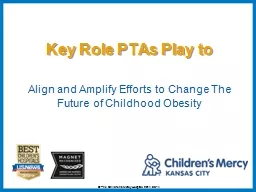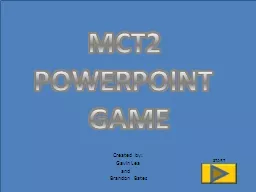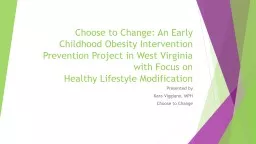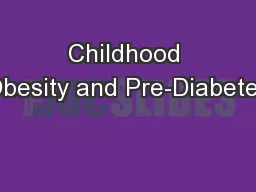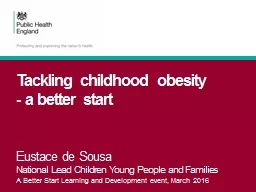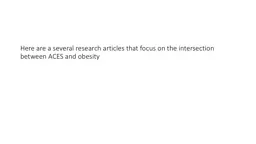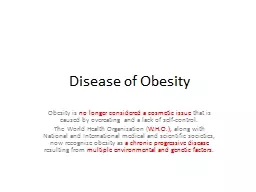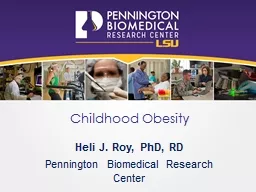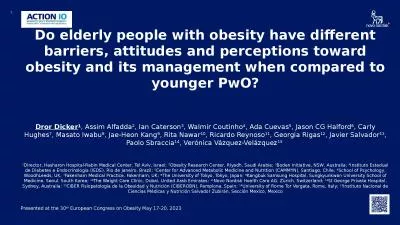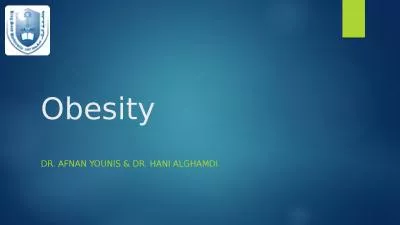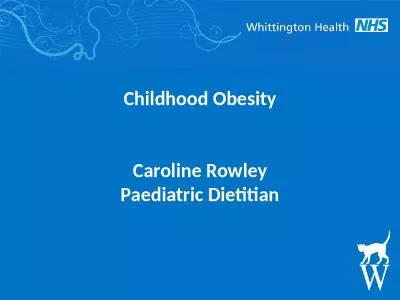PPT-Align and Amplify Efforts to Change The Future of Childhood Obesity
Author : volatilenestle | Published Date : 2020-06-30
Key Role PTAs Play to WELCOME Objectives Review childhood obesitys causes and problems Highlight the Missouri Childrens Services Commission prevention and treatment
Presentation Embed Code
Download Presentation
Download Presentation The PPT/PDF document "Align and Amplify Efforts to Change The ..." is the property of its rightful owner. Permission is granted to download and print the materials on this website for personal, non-commercial use only, and to display it on your personal computer provided you do not modify the materials and that you retain all copyright notices contained in the materials. By downloading content from our website, you accept the terms of this agreement.
Align and Amplify Efforts to Change The Future of Childhood Obesity: Transcript
Download Rules Of Document
"Align and Amplify Efforts to Change The Future of Childhood Obesity"The content belongs to its owner. You may download and print it for personal use, without modification, and keep all copyright notices. By downloading, you agree to these terms.
Related Documents

